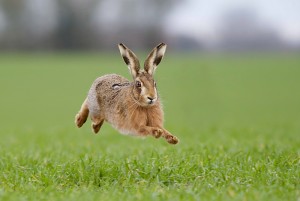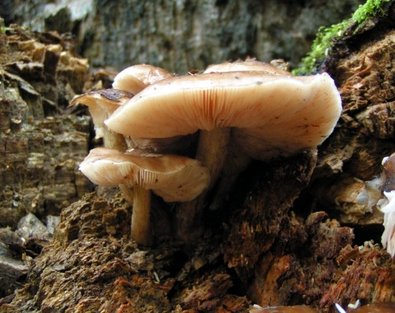Recording Wildlife |
|
We have set-up a dedicated email address: for you to send us any wildlife observations you've made on the park. Please report any wildlife or plants you see on the park with the time, date and a rough estimate of the position. This data will be very valuable for the current assessment of the park's biodiversity.
Send your reports to: [email protected]
Thank you.
Send your reports to: [email protected]
Thank you.
Why?
We welcome records of any wildlife recorded on the park as we require as much data as possible to enable conservation, management and improvements to the site for the benefit and enjoyment of all.
If you wish to become involved in recording or studying a group of plants or animals here are a few guidance notes:
BIRDS, BUTTERFLIES, MOTHS, SPIDERS, LADYBIRDS,DRAGONFLIES, MAMMALS, BATS, BEES, WASPS, GRASSHOPPERS & CRICKETS, TREES, FLOWERING PLANTS, FERNS, MOSSES LIVERWORTS, LICHENS, REPTILES, AMPHIBIANS AND A HOST OF VARIOUS INSECT FAUNA.
ANY INTEREST OR HELP WOULD BE APPRECIATED (you do not need to be an expert on the group!)
We welcome records of any wildlife recorded on the park as we require as much data as possible to enable conservation, management and improvements to the site for the benefit and enjoyment of all.
If you wish to become involved in recording or studying a group of plants or animals here are a few guidance notes:
- Pick a subject or subjects you are comfortable with and steadily build up your knowledge. (Do note, nobody knows it all and that includes the Experts!)
- Focusing to start with, on one subject area is probably the best way to get to know wildlife properly.
- Choose a subject with easily obtained identification guides*
BIRDS, BUTTERFLIES, MOTHS, SPIDERS, LADYBIRDS,DRAGONFLIES, MAMMALS, BATS, BEES, WASPS, GRASSHOPPERS & CRICKETS, TREES, FLOWERING PLANTS, FERNS, MOSSES LIVERWORTS, LICHENS, REPTILES, AMPHIBIANS AND A HOST OF VARIOUS INSECT FAUNA.
ANY INTEREST OR HELP WOULD BE APPRECIATED (you do not need to be an expert on the group!)
Birds
|
BIRDS: Mainly large and easily to identify. 572 species have been or are still recorded in the wild in Britain.
We have, so far, recorded 100 plus and the park has excellent diverse habitats for residents, breeding visitors and migrants alike. Very good identification guides are available. |
Mammals
|
MAMMALS: These are a bit more of a challenge than birds as they are often nocturnal and very shy of humans. In Britain there around 77 species, though this includes a fairly long list of rare visitors such as migrant bats as well as species which have been introduced into the UK. Very good identification guides are available.
Bats are a more specialist group of mammals and require audio identification methods. Equipment is for identification is readily available at a price. |
Butterflies, Dragonflies & Damselflies
|
BUTTERFLIES: Mainly large and conspicuous but usually they require sunny days and fly at specific times to mate, feed and lay eggs. There are approx. 67 species and very good identification guides are available.***
Don't forget to stroll down our Butterfly Walk - located between the Spring Lane car park and the Lambley pedestrian entrance, running parallel to Spring Lane. DRAGONFLIES & DAMSELFLIES: Can be similar to butterflies in that they have specific places they favour. They may not be limited to water bodies. Approx. 40 resident and 12 migrant species. Very good identification guides are available. |
Moths
|
MOTHS: Day flying moths are fascinating, much ignored and work needs to be done in recording these.
Night flying moths need specialist lamp traps or sugaring to find (We are planning Moth nights – details will be available on our news pages). Micro-Moths are another field entirely and are challenging to identify. They are an important field of study as they are frequently ignored. There are a multitude of species and good identification books are available for the macro moths more, specialist information is required for micro moths. |
Molluscs
MOLLUSCS: Can be conspicuous and often relatively easy to find, although there are quite a number of small and difficult to identify species. Good identification guides are readily available for the larger species.
Grasshoppers & Crickets
Insects
|
INSECTS: Excluding the above discussed types there is a multitude of insect species to study. Beetles, wasps, bees, ladybirds, bumblebees other beetles (over 4,000 species). This is a fascinating area of study but not for the faint hearted. Some good but limited identification guides are available.**** Getting involved with the more obscure invertebrate groups is not to be recommended for beginners. |
Spiders
Flowering Plants
|
FLOWERING PLANTS: Including trees, grasses, sedges and rushes make up the bulk of our wildlife landscape, but are often taken for granted. For beginners identifying these species can be somewhat daunting, probably due to the technical terminology used, but once you 'get your eye in' things do slot into place. There are over 2,000 species of higher plants, so it's often best to split these into smaller groups/types to study or record, e.g. Orchids, bulbous plants, trees, water plants etc. There are some very good identification books available but they can become technical. |
Ferns, Mosses, Lichens & Liverworts
|
FERNS: Approx. 80 species, though some rare introductions others very local. Good identification guides are available. MOSSES & LIVERWORTS: Over 1,000 species and can be found in most places in Britain. Microscope needed for identification work. LICHENS: fascinating alliance (Simbiosis) between a fungi and an algae. Some good identification guides available. |
Fungi
|
FUNGI: There are over 14,000 species and biologists are still counting. Larger types can be beautiful, strange and very distinct. They can be difficult to identify, and again a microscope is often needed. We would always encourage due care to be taken as there are some species which are very poisonous or worse, deadly. Some mushrooms are poisonous and can be deadly. ONLY collect what you know is safe and always carry a field guide to be sure. IF YOU ARE IN ANY DOUBT AT ALL PLEASE DO NOT HANDLE OR COLLECT FUNGI found within Gedling Country Park. |
How?
We hope this has wetted your appetite and will help you become involved in nature study and recording within the park. If you are now wondering on how to start to make records we have included some information below on how to make a record.
A basic record is is a documented record of a species, at a named location at a point in time by a named person - WHAT? WHEN? WHERE? WHO?
If you are out for a day in the park take a look what is around you and record some details of the wildlife
We hope this has wetted your appetite and will help you become involved in nature study and recording within the park. If you are now wondering on how to start to make records we have included some information below on how to make a record.
A basic record is is a documented record of a species, at a named location at a point in time by a named person - WHAT? WHEN? WHERE? WHO?
If you are out for a day in the park take a look what is around you and record some details of the wildlife
Warning - This can become an addictive hobby!
- Note the identity of the species to the best of your ability (if you are not 100% sure still pass on the data but share your misgivings)
- Note the site** (Sat.Navs. on phones are useful and we are developing a gridded map for the 'Friends' use)
- Note the time and date (important for breeding and migration studies as well as working on the environment)
- Note your name (required for feedback and to credit observers)
- It is also useful to record weather (wind direction, precipitation, cloud cover temp etc.) and also numbers of individuals present at any one time
If you might be interested in acting as a recorder for any of the following groups please contact us.
* www.ispotnature.org site that promises to identify wildlife if you forward a photograph
** There is an App for recording data at www.recordwildlife.co.uk.
We have not tried it as of yet but it does have a built in Sat.Nav. recorder
*** www.ukbutterflies.co.uk for butterfly identification.
**** www.britishbugs.org.uk promises to identify British insects












